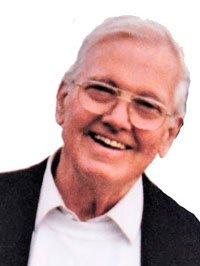The true north origins of B.C.
Liard Basin is more foreign than Games of Thrones.
December 15th, 2016

These are some of the Europeans who were at Fort Simpson in the Liard Basin in 1892. HBC N7535
Anthony Kenyon’s The Recorded History of the Liard Basin 1790-1910: Where British Columbia Joins the Yukon and N.W.T. is a 500-page reminder that B.C. was also born as a political construct from the north.
The Liard Basin extends north into the Yukon and the North West Territory and includes 20% of the landmass of British Columbia. It gave rise to Fort Nelson, Fort Liard, Fort Simpson and Dease Lake. Anthony Kenyon’s The Recorded History of the Liard Basin 1790-1910, Where British Columbia Joins the Yukon and N.W.T. is a definitive history written for both local readers and the academic community. This unprecedented book is reviewed by George Szasz.
*
The Recorded History of the Liard Basin 1790-1910 contains 29 chapters, illustrated with maps, archival documents and portraits of many of the chief characters. It includes name lists, biographies, extensive references, vocabularies, a bibliography and an in-depth index. The first two chapters set the stage: a summary of world and North American events that resulted in Scots, French and Aboriginals working closely together in the Liard Basin. The Europeans were focussed on the lucrative fur trade.
Whereas the policy of the French was to integrate as much as possible with aboriginal peoples, to live with them in the forest, to keep them on task and to maximize their trapping efforts, traditionally the English preferred to have a solid building as a base and wait for aboriginal traders to come to them with furs. The Scots and French eventually evolved a combination of the two systems. The British – unlike the French – also pursued the cultivation of vegetables and grain, to augment the subsistence meat supplies.
Roderick Mackenzie, cousin of Alexander Mackenzie, established Fort Chipewyan as a base for expeditions to the Pacific and Arctic Oceans. On his second try in 1793, Alexander Mackenzie reached the Pacific Ocean at Bella Coola.
In Chapter 4, Alexander Mackenzie (now Sir) established his New North West Company (competing with the XY company named after the symbols used to mark the packs of furs). A nephew of Sir Alexander provides a detailed, day-by-day record of the often fatal competition between the XY and the North West Company.

The SS Wrigley, the first steam ship on the Liard, which arrived in 1886. The Liard-Mackenzie junction is over a mile wide at this point. Photo: HBCA Mather collection)
Chapters 5 and 6 present the findings of Europeans on their first contact with Aboriginals. Roderick Mackenzie gave each clerk who opened a new post a list of items he wanted recorded. Information was gathered about the local flora and fauna, animals, hunting, fruits, fishing, indigenous population, language, property, leaders, socializing, position of women, disposition, government, food, tools, weapons, clothing, religion, death, and stories told.
Dr. Kenyon points out that one aboriginal story about the great flood is much the same as the Noah story of the Old Testament, but it is most unlikely that it was a derivative of the Biblical story.
Chapter 7 gives a portrait of the yearly cycle of the day to day activities of the posts, quoting in detail Willard Wentzel’s journal in 1806. Willard Ferdinand Wentzel, a Norwegian, entered the service of the North West Company in 1799. In 1821 he was assigned to John Franklin’s first overland expedition to the Arctic Ocean to organize and look after the needs of the aboriginal workers.
In a letter to Roderick Mackenzie, Wentzel wrote: “in the month of January [1822] had the melancholy account of the death of eleven of the party who had accompanied Captain Franklin, all starved”… “wading through snow knee deep, without provisions to satisfy the cravings of hunger” … “This, Sir, is all I am allowed to impart at present.”
Two years later Wentzel did elaborate further on the Franklin expedition. “…As to the report of some of the Canadian voyagers having fallen a sacrifice to support others… I am sorry to say, is generally credited in this country…”. The act to which Wentzel obliquely referred was cannibalism.
While Wentzel’s journals and letters make almost no mention of women and their activity, the records of Daniel Harmon, an employee of the North West Company from 1800 to 1819, give a summary of the options and the outcomes of the relationship between white men and aboriginal women.
Harmon wrote: “This day …[a Girl of about fourteen years of age] was offered to me and after mature consideration concerning the step I ought to take I finally concluded it would be best to accept her, as it is customary for all the Gentlemen who come in this Country to remain any length of time to have a fair Partner…my intentions now are to keep her as long as I remain in this uncivilized part of the world, but when I return to my native land shall endeavour to place her into the hands of some good honest Man…”.
As it happened, Harmon and his anonymous wife had 14 children, two or three of whom died young, and the couple stayed together till his death in 1845.
Virtually every one of the trading company’s staff had a country wife. In the mid-19th century, the Hudson’s Bay Company had a policy on alliances: “Connubial alliances are best security we can have of the goodwill of the Natives…”.
Five further chapters are dedicated to the corollaries of the invading civilisation: journals and letters describe the starvation, murder, the war between the North West Company and the Hudson’s Bay Company, the amalgamation of the Companies under the name of the Hudson’s Bay Company and the rise of young George Simpson as Governor of the whole trading territory.
Chapters 22 and 23 focus on documents reflecting the times in the mid-19th century: the area had largely been explored by now and a fairly good relationship had evolved between the Aboriginals and the European traders. In 1858 George Simpson received a letter from head office in London indicating that the Church of England was pressing the idea of sending in missionaries. In 1858 the Fort Simpson Journal celebrates the arrival of Archdeacon Hunter’s arrival and the first Divine service.
In 1858 the discovery of gold in the Fraser River sand bars set off a gold rush. The British Government decided to make a colony of the mainland to bring some law and order and provide services to the miners. The colony eventually stretched to the 60th parallel, thereby including most of the Liard River Basin. The population, though technically included in British Columbia, were entirely oblivious to the Cariboo gold rush, or to the existence of Barkerville, then with over 10,000 inhabitants.
Chapters 25 and 26 focus on the arrival of the steam ship and the excitement of the potential of rapid steam transport. Sophistication was gradually creeping into the Mackenzie district. People were beginning to preserve records. A library was set up in an already existing museum room. In 1896 gold was struck in the Yukon. In the summer of 1896, sixty miners starting from Edmonton passed through Fort Simpson and the Liard Basin. A few decided to go up the Liard River, which had been explored some sixty years before.
Chapter 27 is based on a journal which provides the only daily accounts of the journey up the 1,000 miles of frozen river to the Klondike, dragging thousands of pounds weight on toboggans.
Dr. Kenyon concludes his history with a speculative Epilogue: “The facts and observations recorded in this book have not been selected. The information selected itself…”.
He observes: “The location is the Liard Basin and its communities, but the observations of the aboriginal people, the life style of the people of the boreal forest of Western Canada, were quite different from the plains people and others. These people had no wigwams, no teepees, no tomahawks, no horses or dog sleds, no axes or iron, no burial grounds but they did have drums and stories…”.
The origins of these original inhabitants of the Liard Basin are discussed. He cites Roderick Mackenzie, the cousin of Sir Alexander, as the unsung hero of his chronicle, and asserts “a hidden theme in the story is the country wife.”
BOOK:
The Recorded history of the Liard Basin 1790-1910 Where British Columbia joins the Yukon and N.W.T. (Published by Fort Nelson News 2016). 978-177136-414-0
519 pages. $60 plus postage
*
ABOUT THE AUTHOR: After many years of research, Dr. Anthony Kenyon has self-published The Recorded History of the Liard Basin 1790-1910. Born and raised in England, Kenyon graduated in medicine at Cambridge University (1958 and married in 1959 after finishing his internship. He then worked for three years in hospitals in Central Africa and his wife worked in the Central African Mail when they were not in small bush stations. He completed his surgical training in the UK and Canada intending to return to Africa. In 1966 he arrived in Fort Nelson with his wife and three-year-old daughter to take on a four-month locum in the area. The resident physician, Dr. Damian Metten, offered a partnership in the clinic, whereupon his four months of locum stretched to forty years of practice. A few years before Dr. Kenyon’s arrival the famous “Ma” Murray (Margaret Murray) started a newspaper, The Fort Nelson News. After the subsequent editor Bob (R.L.) Angus died in 1974, the Kenyons bought the paper. As Fort Nelson increasingly became a transportation hub and a regional centre for an area rich in natural resources, Dr. Kenyon became interested in the history of the area, particulary in the community’s bicentenary year of 2005 when he presented a paper to the Fort Nelson Historical Society about the first community to use the name Fort Nelson, as far back as 1805. In Kenyon’s research of the region’s history he found mistakes copied forward from one author to the next. He went back to original writings and found a remarkable amount of records written by the first European pioneers as far back as 1790, portraying in detail, themselves, their workers, and the aboriginal people who had lived there for eleven thousand years.
*
The Ormsby Review. More Readers. More Reviews. More Often.
Reviews Editor: Richard Mackie
Reviews Publisher: Alan Twigg
The Ormsby Review is hosted by Simon Fraser University.
—
BC BookWorld
ABCBookWorld
BCBookLook
BC BookAwards
The Literary Map of B.C.
The Ormsby Review






Leave a Reply